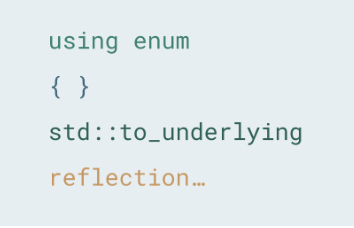Understanding the inner workings of C++ smart pointers -- Andreas Fertig
 Previously, we explored a basic implementation of
Previously, we explored a basic implementation of unique_ptr in "Understanding the Inner Workings of C++ Smart Pointers - The unique_ptr." Now, let's enhance that model by incorporating a custom deleter, similar to what the Standard Library provides.
Understanding the Inner Workings of C++ Smart Pointers - The Unique_ptr with Custom Deleter
by Andreas Fertig
From the article:
Let's first establish why somebody would want a custom deleter.
One example is that the object was allocated via a local heap, and such must be returned by calling the corresponding deallocation function.
Another example is
fopen. This function returns aFILE*object that you are supposed to delete by callingfclose. A classic job for a unique pointer. But you cannot calldeleteon theFILEpointer.Here are two examples of using a
void MyDeleter(Object* ptr)unique_ptrwith a custom deleter.
{
delete ptr;
}
unique_ptr<Object> alfred{new Object{}};
static_assert(sizeof(alfred) == sizeof(void*));
unique_ptr<Object, decltype(MyDeleter)> robin{new Object{}, &MyDeleter};
static_assert(sizeof(robin) == sizeof(void*) * 2);
Oh yes, the first object, alfred, doesn't provide a custom deleter. Only robin does. Behind the curtains, both do. Let's look at a modified unique_ptr implementation that handles the custom deleter case.

 After reading this article, you should understand the basics of the opaque pointer pattern and how you can implement it using
After reading this article, you should understand the basics of the opaque pointer pattern and how you can implement it using  The evolution of the C++ language continues to bring powerful features that enhance code safety, readability, and maintainability. Among these improvements, we got changes and additions to enum class functionalities across C++17, C++20, and C++23. In this blog post, we’ll explore these advancements, focusing on initialization improvements in C++17, the introduction of the using enum keyword in C++20, and the std::to_underlying utility in C++23.
The evolution of the C++ language continues to bring powerful features that enhance code safety, readability, and maintainability. Among these improvements, we got changes and additions to enum class functionalities across C++17, C++20, and C++23. In this blog post, we’ll explore these advancements, focusing on initialization improvements in C++17, the introduction of the using enum keyword in C++20, and the std::to_underlying utility in C++23. The C++ language has two large categories of “don’t do that” known as undefined behavior and ill-formed program. What’s the difference?
The C++ language has two large categories of “don’t do that” known as undefined behavior and ill-formed program. What’s the difference?